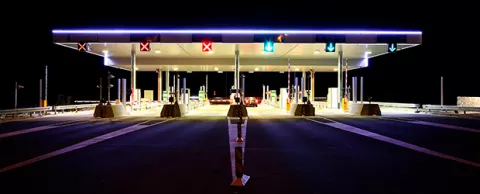
As funds for infrastructure development are tight, tolls are becoming an increasingly common vehicle for raising the needed cash. By some estimates, three out of five states are actively planning or likely considering new tolls as a way to pay for projects.
These projects run the gamut from new bridges and tunnels to express lanes with tolls that vary based on how fast traffic is moving. But if you’re considering tolls for new projects, you need to be mindful that the overall world of transportation is changing — and that may affect your ability to collect tolls down the road.
Cubic Transportation Systems, a Council Associate Partner, has highlighted five trends in road pricing that you should be aware of. I’ve highlighted a few of the key points below.
It doesn’t mean that tolling will no longer make sense — to the contrary, it may make even more sense — but it is a good reminder to consider how the overall marketplace is changing before locking yourself in to a long-term program. — Kevin Ebi
1. More cars, but fewer drivers
Younger people don’t want to own cars. Many don’t even want to drive. Today, the number of teens with drivers licenses is half what it was 30 years ago. Young adults are abandoning cars, too, with a decline ranging from about 16% for people who are in their early 20s to about 7% in their early 30s.
And licenses are only part of the story. Among the members of the younger generations, even licensed drivers are less likely to own cars. As a general practice, they are more likely to use on-demand ride services like Uber or Lyft when transit isn’t convenient, or use short-term car rental services, like Car2Go, from Council Global Lead Partner Daimler.
What does that mean for tolling? Over time, an increasingly larger share of the cars on the toll rolls are going to be rental cars or driven by a for-hire driver. You won’t be passing the costs directly to the person who’s getting the most benefit from the trip.
2. Convenience is paramount
Especially over the past few years, commuters are expecting their trips to become easier. In a growing number of places, they can plot their entire trips on their smartphones — complete with guaranteed spaces on commuter trains.
When it comes to tolling, that means transportation planners have to consider convenience. Commuters won’t put up with clunky transponders, difficult websites, confusing payment processes, and so on. If one method of travel is inconvenient, they will find another way to get there.
3. The question of autonomous vehicles
Transportation planners, who are already struggling to figure out what impact autonomous vehicles will have, also need to consider their impact on tolls.
The issue is this: some companies working on autonomous vehicles don’t believe that not only are drivers unnecessary, they’re a liability. They believe the cars are safer if humans cannot control them.
The result is that especially with congestion-priced express toll lanes, in the future, drivers may not be able to make a snap decision on whether or not to use them.



